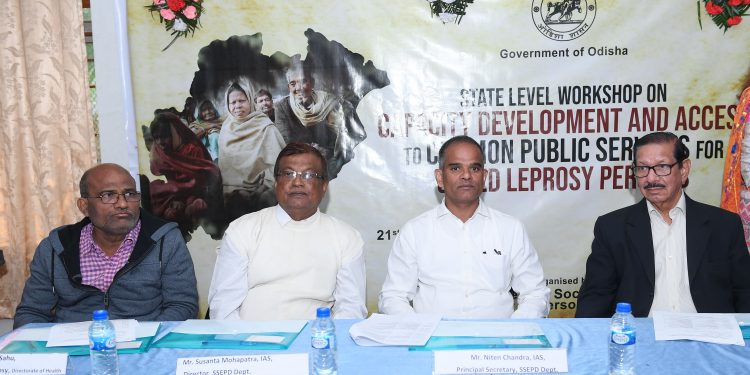Bhubaneswar: The state government aims to achieve less than one leprosy case per 10 lakh population by October 2 this year and in this regard it has taken several initiatives to reduce Grade-II disability cases due to leprosy.
Twelve districts including Gajapati, Kandhamal, Rayagada, Malkangiri, Kendrapara, Jagatsinghpur, Cuttack, Balasore, Puri, Bhadrak, Nayagarh and Khurda have already achieved the target.
With an aim to make public services accessible to all leprosy cured persons in the state, the Social Security and Empowerment of Persons with Disabilities Department (SSEPD) organised a two-day workshop here.
Senior officials of the department, social workers, legal aid activists and doctors attended the opening day of the workshop Monday which witnessed a large footfall of cured lepers.
The workshop included sessions on diverse subjects including, Supreme Court judgment on protection of fundamental rights of cured lepers, National Leprosy Eradication Programme (NLEP) implementation, state’s leprosy budget, role of paramedical workers for detection and management of new cases, socio-economic rehabilitation and reconstructive surgery.
“The focus of the workshop is to chalk out an exhaustive strategy to rehabilitate the cured lepers of Odisha. Besides, the Supreme Court’s directives for social and economic inclusion of the cured lepers would also be discussed in detail,” said SSEPD Department director Susanta Mohapatra.
The prevalence rate of leprosy in the state was 121.4 per 10,000 people during 1982-83 and it came down to 0.65 during 2006-07 due to successful implementation of National Leprosy Eradication Programme (NLEP). But, the prevalence rate slowly went up to 1.24 by end of March.
Principal Secretary Chandra said, “This is the first time ever that a workshop like this has been organised by the state government for cured lepers. There should be no discrimination on the ground of leprosy and disability.”
The guests informed the participants about campaigns on leprosy awareness and leprosy detection by the state government to be held January 30 and February 15, respectively.
It may be mentioned here that the Department of Health and family Welfare looks after the preventive and curative aspect of leprosy whereas the SSEPD works towards the socio-economic rehabilitation of leprosy cured persons.
As many as 8,004 new leprosy cases were detected in 2014-15, followed by 10,174 cases in 2015-16, 10,045 in 2016-17, 9,576 in 2017-18 and 2,252 till July last year.







































